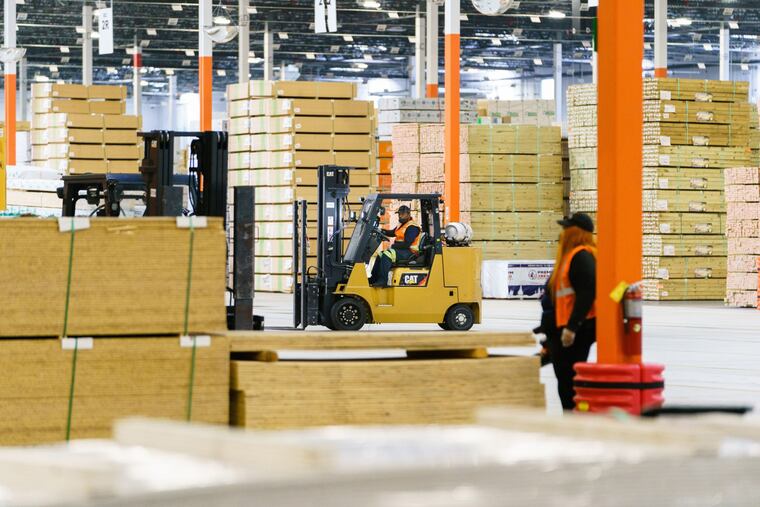U.S. labor reshuffle has more room to run, fueling higher wages
The stay-at-home economy has wages jumping. Hiring has boomed in transportation and warehousing, while the leisure and hospitality sector remains far below its pre-pandemic peak.

The pandemic spurred a historic change in consumer demand, pushing up wages and reshuffling America’s workforce in a way that’s unlikely to reverse anytime soon.
Two years after the onset of COVID-19, the labor market has adapted to reflect shifts in spending that’s heavier on goods and lighter on services. Hiring has boomed in transportation and warehousing, and payrolls in retail trade, which saw some of the worst job losses in early 2020 when lockdowns shuttered storefronts, are now higher than before the health crisis.
Meanwhile, the enormous leisure and hospitality sector remains 1.5 million jobs short of its pre-pandemic peak.
That’s “the stay-at-home economy in a nutshell,” said Sarah House, senior economist at Wells Fargo & Co. And while spending patterns will likely revert over time, “we’re not going back to how we were spending, how we were hiring, overnight.”
The March jobs report, due out Friday, will likely show continued improvement across the U.S. labor market — likely offering a cleaner read compared with recent reports affected by the coronavirus, benchmark revisions, and population adjustments.
Economists estimate that employers added about a half-million jobs in the month as pandemic restrictions faded. They also see an acceleration in wage growth and a pickup in labor force participation.
Employers across industries nationwide have increased pay to attract and retain workers amid near-record vacancies. For instance, average hourly earnings for nonsupervisory workers in leisure and hospitality have jumped more than 15% since February 2020. Even so, the sector typically pays less than all other major industries.
Rapid wage increases have put upward pressure on consumer prices. Bloomberg Economics estimates that inflation is costing the average household an additional $5,200 this year for the same goods and services purchased in 2021.
"Wages moving up is a great thing," Federal Reserve Chair Jerome Powell said earlier this month. "But the increases are running at levels that are well above what would be consistent with 2% inflation."
Data out Thursday are expected to show the Fed's preferred inflation measure rose 6.4% in February from a year ago, the most in four decades. The Commerce Department report will also provide data on inflation-adjusted spending, which economists estimate fell 0.2% in February from the prior month.
Decades-high inflation — currently running above wage gains — is raising the financial incentive to work. About 17% of Americans cited inflation as the top issue facing the country, the most since 1985, a March Gallup poll showed.
While wage growth is a factor pulling workers into the labor market from the sidelines, “inflation might be more of a pushback into the workforce as some of the financial positions of households just don’t look quite as strong in the face of nearly 8% inflation,” House said.
Higher labor-force participation is expected to ultimately help curb the pace of compensation gains as labor supply moves closer to meet businesses' demand. Employers have been fighting over the same small pool of available workers, giving many Americans the opportunity to search for higher pay or better working conditions in a different industry.
The problem has been exacerbated further, especially in leisure and hospitality, by fewer immigrant workers.
Looking ahead, the path of labor-force participation is unclear. But Friday’s report will offer some insight into the underlying trend after the measure improved at the start of the year in large part due to population adjustments.